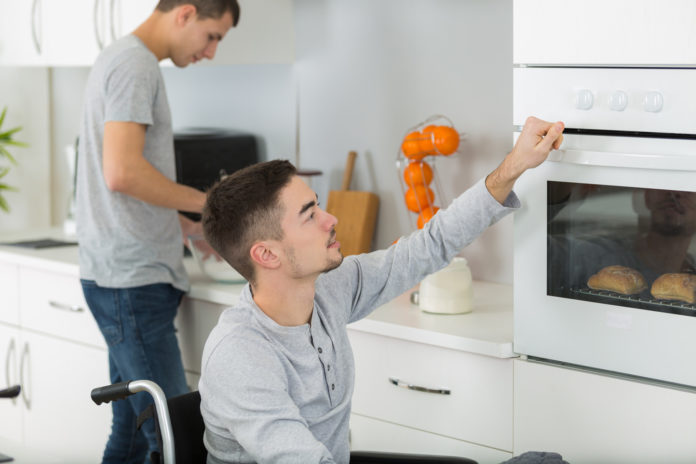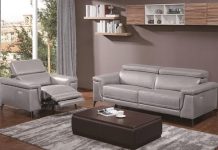Sixty-one million Americans live with a disability. Chances are you either have one yourself or know someone that does.
If you’re looking for ideas on making your house handicap friendly, we have you covered. Read on to find seven things you can do to ensure your home provides accessibility for all.
Table of Contents
Follow ADA Guidelines for Ramp Length
The Americans with Disabilities Act lays out the measures businesses need to take for accessibility.
The ramp requirements are in place because they ensure safety when out in public. You do not need to follow them to a T for your home. If making your house handicap friendly is your goal, follow them as much as you can.
The ADA suggests one foot of ramp for every inch of rise. If your step is 24-inches high, the ramp needs to be 24-feet.
There should be a flat and level landing at the bottom and top of the ramp.
The minimum width for commercial ramps is 36-inches. Some states, like Massachusetts and California, require 48-inches to be ADA compliant.
Adjust Your Doors
Your doors need to be 32-inches, at the bare minimum, to be ADA-compliant. This ensures there’s plenty of space for any size wheelchair to get in and out.
Some people with disabilities have a hard time with dexterity. The doorknobs should be easy to operate without too much hand or wrist flexion. Even if the user happens to have a high-quality electric wheelchair like a Top Gun Mobility Scooter, you’ll need to make sure the adjustments are fit for whatever they use.
If you like your front door to have a peephole, make sure it’s low enough that a wheelchair user can use it.
Renovate Your Bathroom
The bathroom is the hardest space to make handicap accessible. It’s typically the smallest room in the house, so they often need renovations.
You’ll want at least two-and-a-half feet by three feet of clear floor space. This allows the person in the wheelchair room to turn around if needed.
The countertop shouldn’t be higher than 34-inches, providing enough space for the shower chair to roll under.
The toilet seat should be around 19-inches from the floor. Toilet risers can help raise the seat to an appropriate height if necessary. Handrails are great for helping with balance and transferring.
Showers and bathtubs are very slippery places. You’ll need to install grab bars for easy access and balancing purposes. This grab bar guide provides details on choosing the right ones for your needs.
You might consider a bathtub with lower sides or a step-in shower instead. A shower chair is a must-have.
Look into anti-scald valves. These will prevent any burns from too-hot water.
Consider Kitchen Adjustments
The kitchen is one of the most frequented rooms in the home. It may need some renovations or smart adjustments to make your house truly accessible.
For easier access to the sink, floor cabinets should be removed. The plumbing pipes can be moved to the back wall to allow space for a wheelchair under the sink.
The countertops shouldn’t be taller than 30-inches to allow for easy access from a wheelchair.
The cabinet and cupboard knobs should be replaced with pulls. This provides people with weaker muscles or limited dexterity an easy way to get into spaces.
Look into stoves with controls in the front. Back-mounted control panels are challenging to reach from a wheelchair.
You can still make your kitchen more accessible if a full renovation isn’t in the budget.
Sliding trays are an inexpensive way to bring commonly used appliances closer. Set your coffee maker or toaster on one to slide it closer to you when you need it.
If your dishes and cups are stored high, keep a few in lower cupboards for easy access.
Change Your Flooring
Carpet and rugs are wheelchair users’ worst enemies. Their thick fibers make them difficult to wheel through.
Remove any throw rugs from your floor. The front small wheelchair tires can easily get caught up in them.
Hardwood flooring is the best and most beautiful choice. It’s expensive, though, costing $4,500 on average.
Laminate is another option that’s just as durable as hardwood. It’s more forgiving and scratch-resistant, too.
Ceramic tiles are great for kitchens and bathrooms. They’re resistant to both water and high humidity. They come in infinite color and design options, making them perfect for any room of the house.
Fix Up Your Bedroom
One of the most important aspects of a wheelchair-friendly bedroom is the bed.
Find a mattress that’s suited to your exact needs. You might prefer a harder mattress with more support to make transfers and bed transitions a cinch. A softer mattress is easier on your back, though.
The bed height should make getting in and out of bed easy. A frame that’s too high makes transfers from wheelchairs difficult. One that’s too low makes getting out of bed a challenge.
There should be enough space in your bedroom to allow a wheelchair to maneuver.
Reaching for high shelves is difficult for people with limited mobility. Be sure your closets are arranged so the necessities are easy to grab.
Rearrange Your Furniture
One easy way to make your home handicap accessible is by adjusting the layout of your home.
Is your living room full of furniture that’s barely used? Sell or donate furnishings to make more space for a wheelchair. Make sure there are 32-inches of space between furniture for easy maneuvering.
Open-concept rooms are a wheelchair user’s best friend. Arrange rooms so sharp turns won’t be necessary. Remove furnishings to make passageways wider.
A Handicap Friendly Home Within Reach
People with disabilities face hardships every day of their lives. The last place they need to worry about being accessible is their home. Our helpful guide will make it easier for you to make your home more handicap friendly.
Check out our other blogs for home decor and improvement ideas.


















